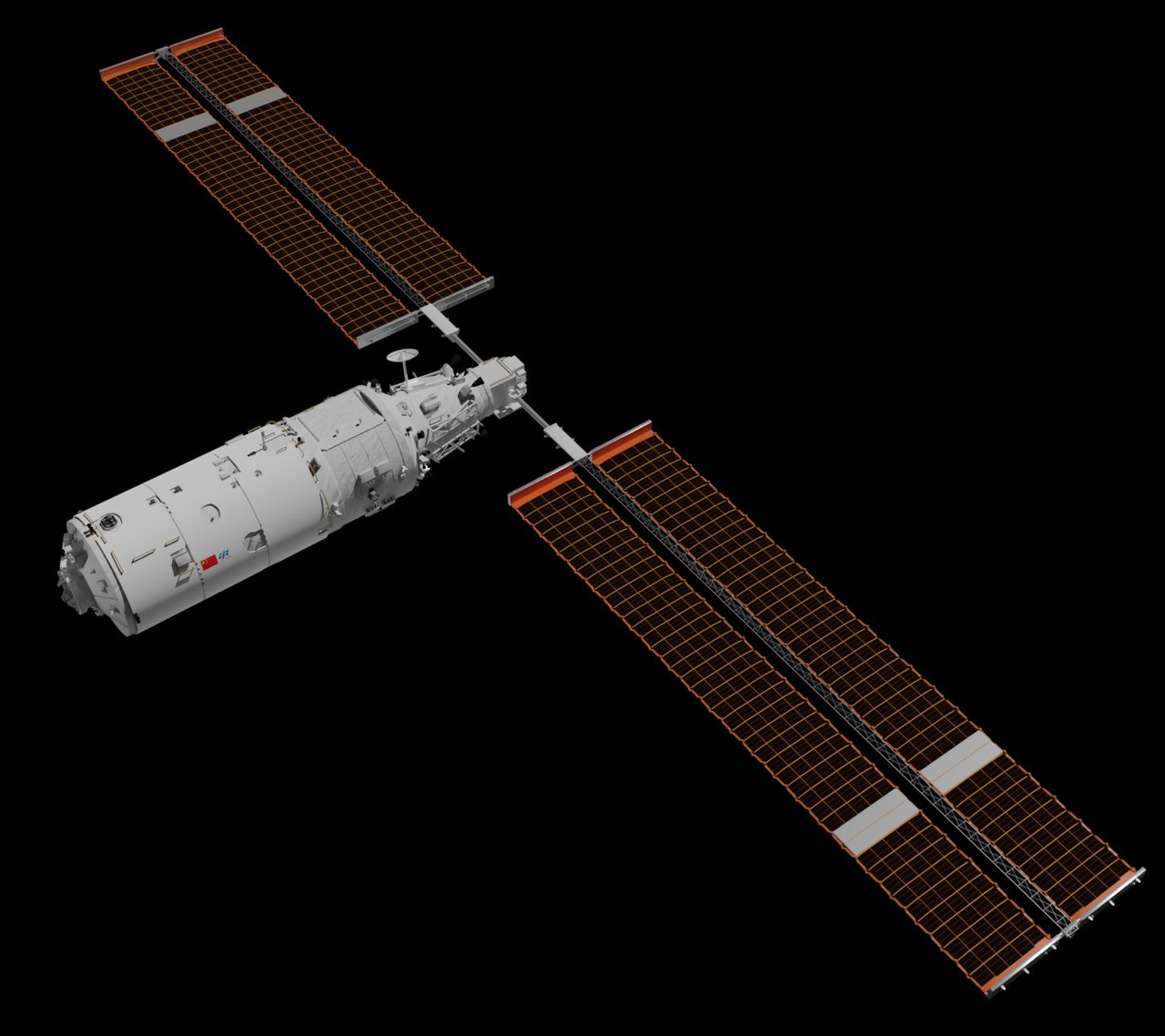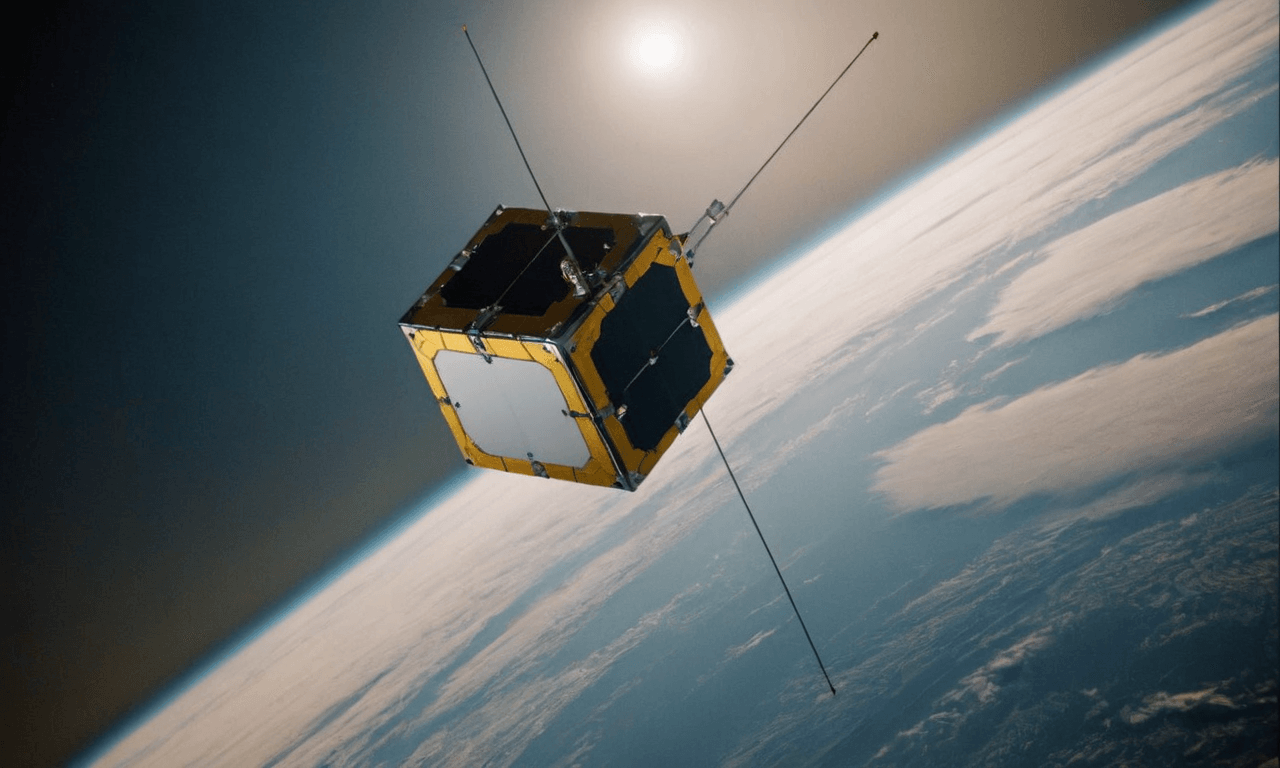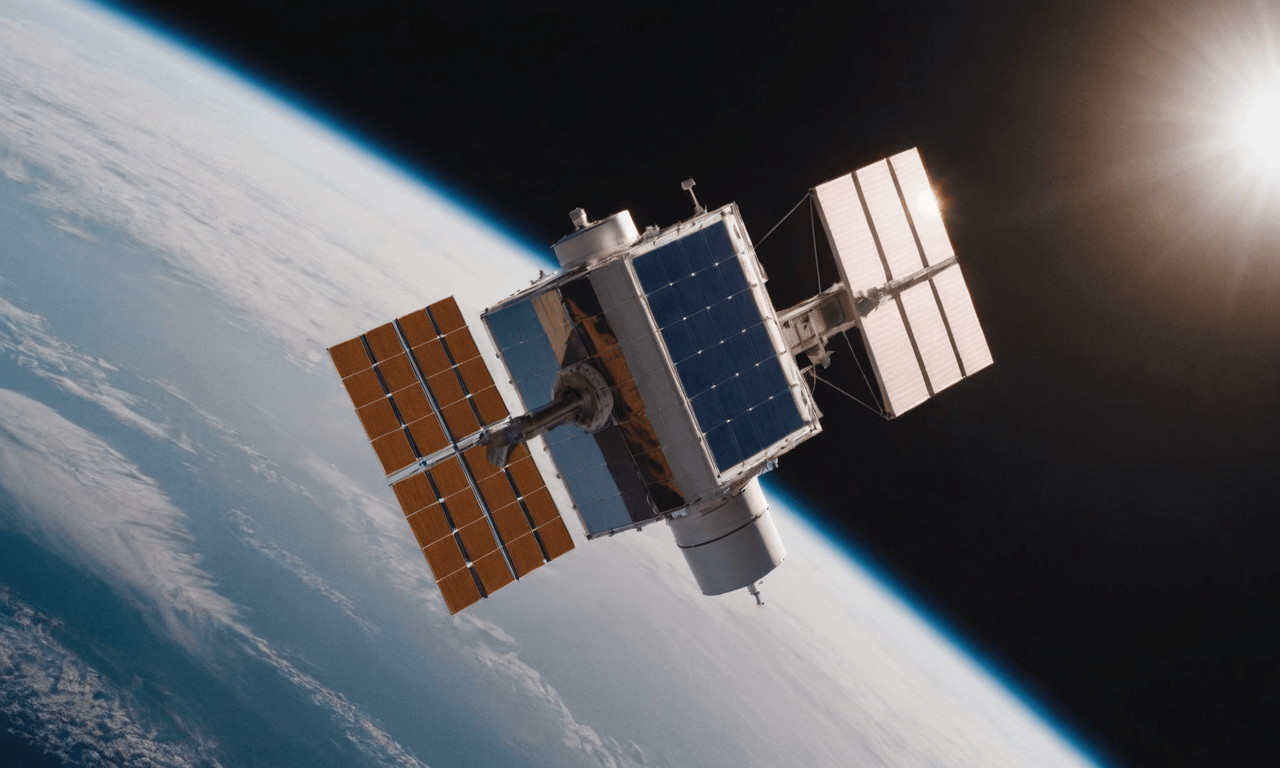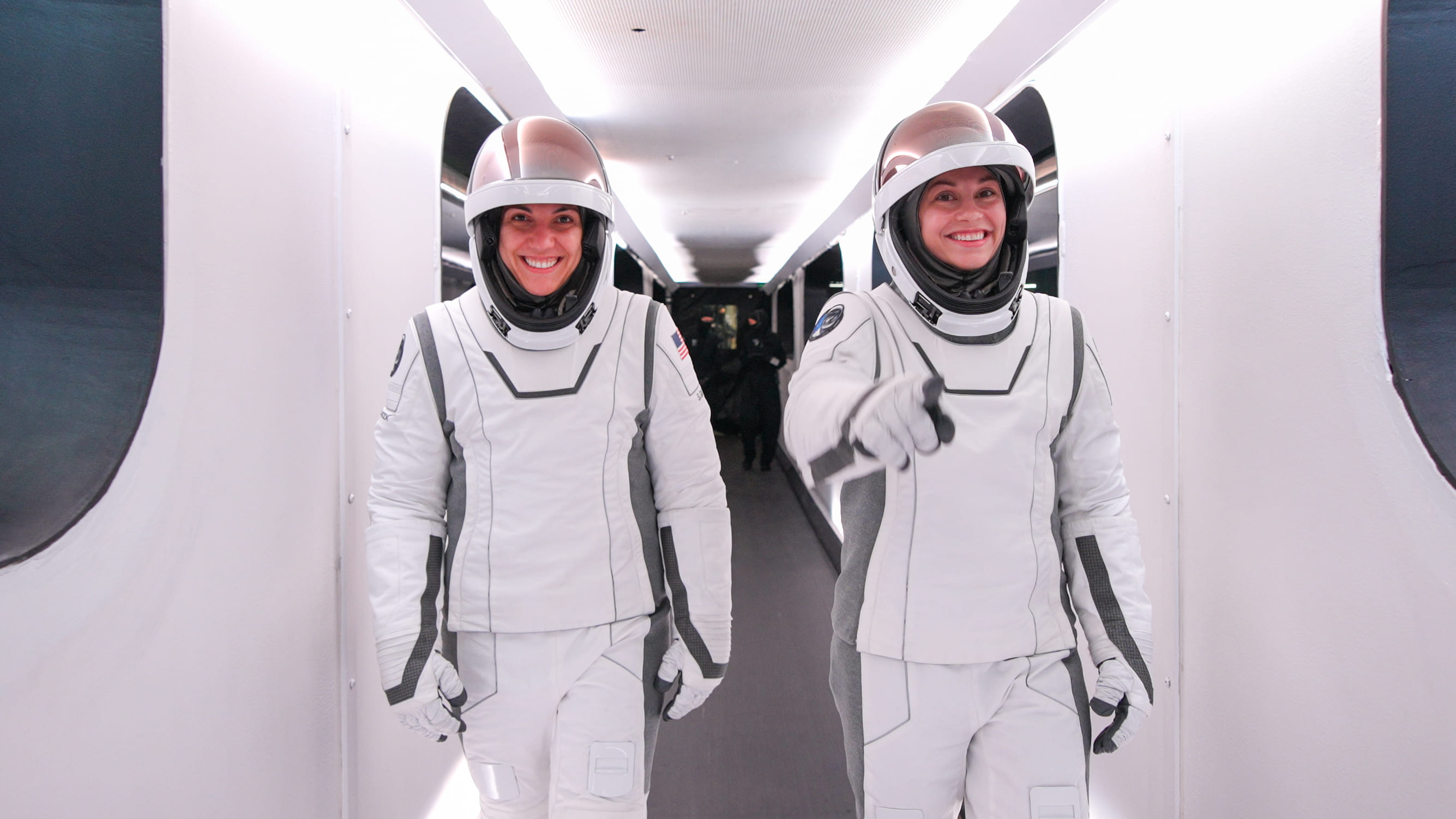· space brief · 6 min read
Space Brief 16 Sep 2024
Highlights of the day include the Polaris Dawn mission's splashdown, advances in space traffic management, and intriguing astronomy insights from the cloud's edge.

📄Top Stories
The Polaris Dawn mission concludes with a successful splashdown, SpaceX’s milestone achievements set to influence future human exploration. The European Space Agency tests innovative traffic management systems to enhance orbital safety. Astronomers reveal breathtaking insights from the Milky Way’s fringes using the James Webb Space Telescope.
📰Detailed Coverage
Historic Polaris Dawn Mission Ends with Safe Splashdown
The historic SpaceX Polaris Dawn mission wrapped up its journey with a successful splashdown in the Gulf of Mexico on September 15 at 3:36 a.m. EDT. The mission, noted for conducting the first-ever private spacewalk, received a warm congratulations from mission commander Jared Isaacman. This mission sets a remarkable precedent for private space exploration and SpaceX’s development of future spacewalk suits.
During its five-day journey, the Crew Dragon Resilience reached record altitudes and hosted the most well-traveled female astronauts in history. As the first of three planned missions in the Polaris Program, this mission aims to advance capabilities for future human space exploration.
Read the full story: SpaceNews
James Webb Space Telescope Reveals New Insight at Galaxy’s Edge
The James Webb Space Telescope (JWST) has captured an unprecedented image of star-forming regions at the extreme edge of the Milky Way, known as the “Extreme Outer Galaxy.” This area is home to young protostars and molecular clouds named Digel Cloud 1 and Digel Cloud 2, offering new insights into star formation processes in distinct cosmic environments.
The impressive resolution provided by JWST’s instruments, including the Near-Infrared Camera (NIRCam) and Mid-Infrared Instrument (MIRI), brings detailed views of these molecular clouds, enhancing our understanding of the Milky Way’s history and the conditions of early star formation. This breakthrough paves the way for further astronomical studies using our satellite tracking tools.
Read the full story: Space.com
ESA Tests Neuraspace Traffic Management Services
The European Space Agency (ESA) is set to test space traffic management services by Neuraspace, a Portuguese startup. Contracted by ESA’s Space Debris Office, this collaboration aims to integrate advanced traffic management services to prevent collisions and manage space debris effectively.
This initiative is crucial for maintaining the safety of Earth’s orbital environment as satellite constellations grow and space activities expand. As we track more objects in Earth’s orbit, tools like our web app become essential for real-time monitoring.
Read the full story: SpaceNews
Anduril Ventures into Space Domain with AI and Autonomous Systems
Anduril Industries announced plans to design, build, and launch fully integrated systems leveraging AI and autonomous technologies by the end of 2025. This move signifies the company’s foray into the space domain, aiming to enhance defense and commercial space operations through cutting-edge technology.
These advancements could revolutionize satellite operations and orbital management, making real-time tracking more efficient and reliable. Stay tuned for how this could impact satellite tracking on our web app.
Read the full story: SpaceNews
NGSO Revenue Expected to Overtake Geostationary Market by 2028
Research by Novaspace predicts that revenues from non-geostationary orbit (NGSO) satellite constellations will surpass those from geostationary satellites by 2028. This shift signals a growing market for low-Earth orbit (LEO) constellations and their applications in global communication networks.
As NGSO constellations expand, the importance of accurate satellite tracking grows. Our web app is poised to meet the rising demand for precise positioning and orbital data insights.
Read the full story: SpaceNews
🛰️Satellite Spotlight
- Satellite Name: Mengtian
- NORAD ID: 54216
- Launch Date: October 31, 2022
- Launch Vehicle: Long March 5B
- Launch Site: Wenchang Spacecraft Launch Site
- Operator: China Manned Space Engineering Office
Mission Overview
Mengtian is the second laboratory module of the Tiangong Space Station. Dedicated to scientific research in microgravity, it supports experiments in:
- Fluid Physics
- Materials Science
- Combustion Science
- Fundamental Physics
It also enhances the station with additional living space and supports extravehicular activities via its airlock and robotic arm.
Orbital Parameters
- Orbit Type: Low Earth Orbit (LEO)
- Inclination: 41.4687°
- Orbital Period: ~92.1 minutes
- Eccentricity: 0.0001308
Current TLE Data
1 54216U 22143A 24252.54631230 .00064048 00000-0 66863-3 0 99993
2 54216 41.4687 295.0062 0001308 60.2319 299.8651 15.63568957103837
Fun Facts
- Name Meaning: “Mengtian” (梦天) translates to “Dreaming of the Heavens.”
- Scientific Capacity: Hosts numerous experiment racks and supports external experiments.
- Spacewalk Support: Features an airlock for payloads, enhancing spacewalk efficiency.
Track Mengtian in Real-Time
Stay updated with Mengtian’s journey using our real-time tracking app
🗑️Space Debris Update
Current tracked debris objects: 13893
Notable recent events
- Earth Gaining a Temporary New Moon: Astronomers have identified a small asteroid, 2024 PT5, roughly 33 feet in length. This space rock is predicted to be briefly captured by Earth’s gravity, potentially becoming a temporary moon. Although 2024 PT5 does not currently classify as space debris, its close approach and temporary capture scenario highlight the ongoing monitoring and tracking of near-Earth objects (NEOs) and their potential to contribute to orbital debris.
For more details, you can read the full article here.
🚀 Upcoming Space Launches
September 17
- Khrunichev State Research and Production Space Center Angara 1.2 | Kosmos (Unknown Payload) from Plesetsk Cosmodrome, Russian Federation (07:00 UTC - 09:00 UTC) Russian military satellite(s) of unknown identity.
- SpaceX Falcon 9 Block 5:
- Galileo L13 (FOC FM26 & FM32) from Cape Canaveral, FL, USA (22:40 UTC - 23:24 UTC) Two satellites for Europe’s Galileo navigation system, providing an alternative to GPS and GLONASS and interoperable with both systems.
September 18
- SpaceX Falcon 9 Block 5 | Starlink Group 9-17 from Vandenberg SFB, CA, USA (14:20 UTC - 16:29 UTC) A batch of satellites for the Starlink mega-constellation - SpaceX’s space-based Internet communication system.
- Rocket Lab Electron | Kinéis Killed the RadIoT Star (Kinéis 6-10) from Onenui Station, Mahia Peninsula, New Zealand (23:00 UTC) Second batch of five satellites for the French Kinéis IoT constellation designed to operate with 25 nanosatellites of 30 kg each.
September 25
- SpaceX Falcon 9 Block 5 | Crew-9 from Cape Canaveral, FL, USA (18:28 UTC) SpaceX Crew-9 is the ninth crewed operational flight of a Crew Dragon spacecraft to the International Space Station as part of NASA’s Commercial Crew Program.
September 30
- Galactic Energy Ceres-1 | Unknown Payload from Jiuquan Satellite Launch Center, People’s Republic of China (00:00 UTC) Details TBD.
- SpaceX Falcon 9 Block 5:
- OneWeb 20 from Vandenberg SFB, CA, USA (00:00 UTC) A batch of 20 satellites for the OneWeb satellite constellation, providing global Internet broadband service.
- 4x Astranis MicroGEO from Cape Canaveral, FL, USA (00:00 UTC) Four MicroGEO communications satellites to be inserted in a custom geostationary orbit.
- SpaceX Starship | Integrated Flight Test 5 from SpaceX Starbase, TX, USA (00:00 UTC) Fifth test flight of the two-stage Starship launch vehicle.
- United Launch Alliance Vulcan VC2S | Certification Flight 2 from Cape Canaveral, FL, USA (00:00 UTC) Replacement Vulcan test launch with inert payload, experiments, and demonstrations for certification with the USSF.
Note: Launch dates and times are subject to change due to technical or weather considerations.
💡Did You Know?
Did you know that the world’s first ‘spaceport’ built specifically for commercial space flights is Spaceport America in New Mexico? Opened in 2011, it features a 3,650-meter runway and has hosted launches for companies like Virgin Galactic and UP Aerospace, marking a new era in civilian access to space.




